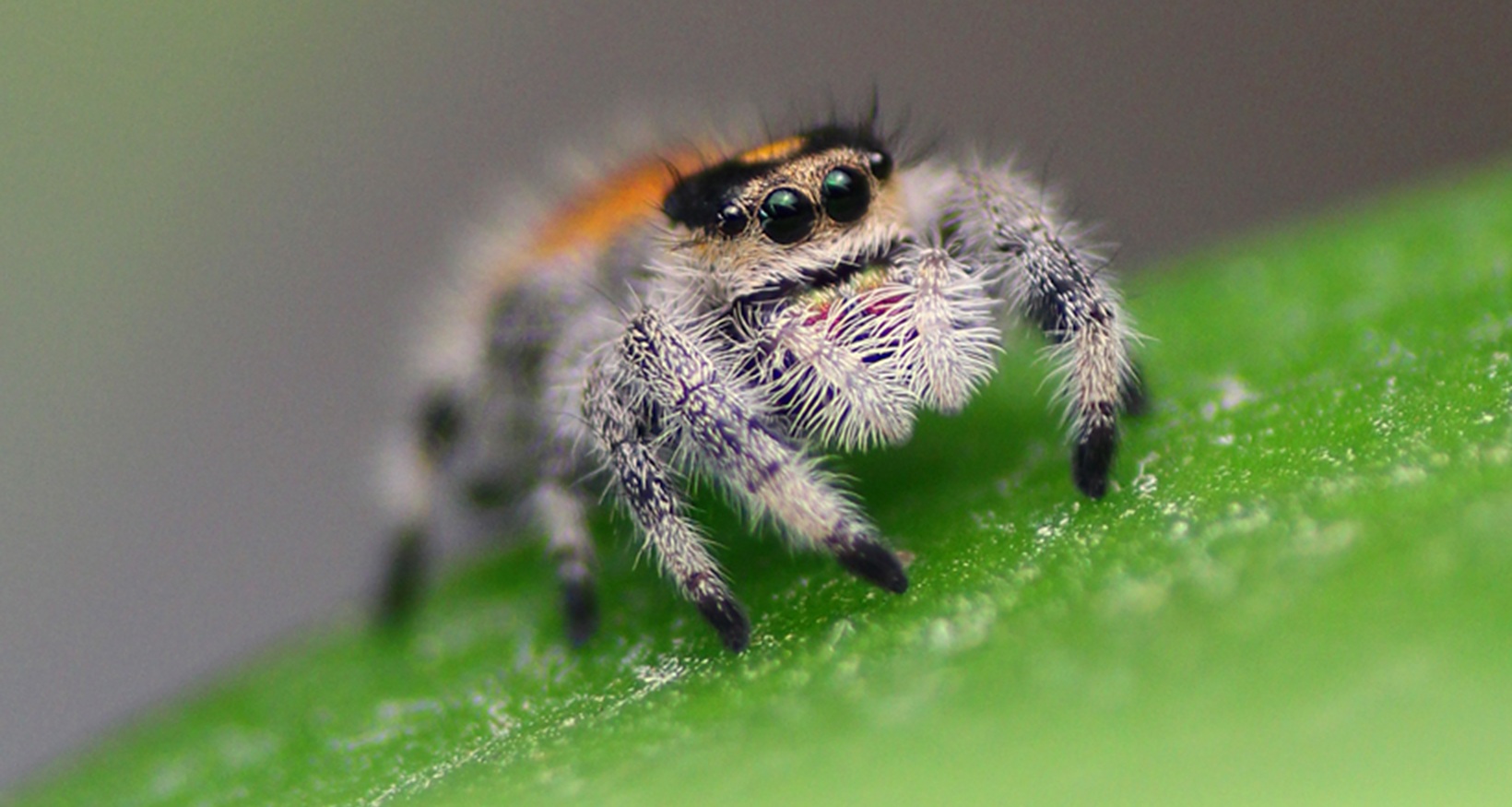Apearance
There are over 6000 species of jumping spiders, all with thier own unique apparances, but all have a few similar characteristics.
Jumping spiders are one of the most iconic families of spider, and also one with the most members. Jumping spiders are known for their four large, front eyes giving them a friendly appearance. Most species are also covered in tiny, fine hair which not only make them look super cute, but act as an extension of their nerve system. Jumping spiders have eight muscle packed legs to help them jump form place to place. These awsome arachnids can grow up to 2.5cm long for some species, while other are as small as a sesame seed.
Diet
Jumping spiders are hunters, eating small bugs, although some jumping spiders will eat prey up to three times their size. These spiders will eat almost anything including: fruitflies, crickets, cockroaches, moths, ants and even other spiders like the grey house spider. But, these spiders don’t catch their prey using webs like some of the other spiders in your backyard. Instead, they use their excellent eye sight to lock onto prey and hunt it down. With great camouflage and lightning fast speed, these spiders don’t easily let a meal pass by. They also use their intelligence to help them hunt. Did you know that the world’s smartest spider species is the fringed jumping spider?
Life Cycle
Jumping spiders start life in an egg sack that a female jumping spider has made. 50-200 spiders will hatch from the egg sack. The Female stays inside the egg sack untill the babies are ready to emerge and passes away a few weeks later. When they do, they come out as millimetre long spiderlings. After a few days, the spiderlings begin to hunt small insects like gnats and aphids. A few weeks later, they shed thier exoskeleton in a process called moulting. The spiders do this 6-9 times depending on the species. Once grown up, the males seek out a mate and the females weave the egg sacks out of silk, ready to renew the cycle.

